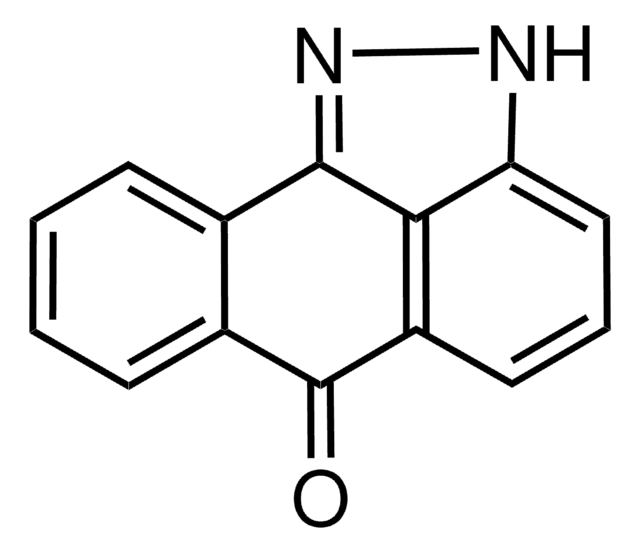S5696
SKI II
≥98% (HPLC), solid
Sinónimos:
4-[[4-(4-Chlorophenyl)-2-thiazolyl]amino]phenol
About This Item
Productos recomendados
assay
≥98% (HPLC)
form
solid
storage condition
protect from light
color
off-white
solubility
DMSO: ≥20 mg/mL
storage temp.
2-8°C
SMILES string
Oc1ccc(Nc2nc(cs2)-c3ccc(Cl)cc3)cc1
InChI
1S/C15H11ClN2OS/c16-11-3-1-10(2-4-11)14-9-20-15(18-14)17-12-5-7-13(19)8-6-12/h1-9,19H,(H,17,18)
InChI key
ZFGXZJKLOFCECI-UHFFFAOYSA-N
Categorías relacionadas
Application
Biochem/physiol Actions
Features and Benefits
Other Notes
Storage Class
11 - Combustible Solids
wgk_germany
WGK 3
flash_point_f
Not applicable
flash_point_c
Not applicable
ppe
Eyeshields, Gloves, type N95 (US)
Elija entre una de las versiones más recientes:
¿Ya tiene este producto?
Encuentre la documentación para los productos que ha comprado recientemente en la Biblioteca de documentos.
Contenido relacionado
Discover Bioactive Small Molecules for Kinase Phosphatase Biology
Nuestro equipo de científicos tiene experiencia en todas las áreas de investigación: Ciencias de la vida, Ciencia de los materiales, Síntesis química, Cromatografía, Analítica y muchas otras.
Póngase en contacto con el Servicio técnico




